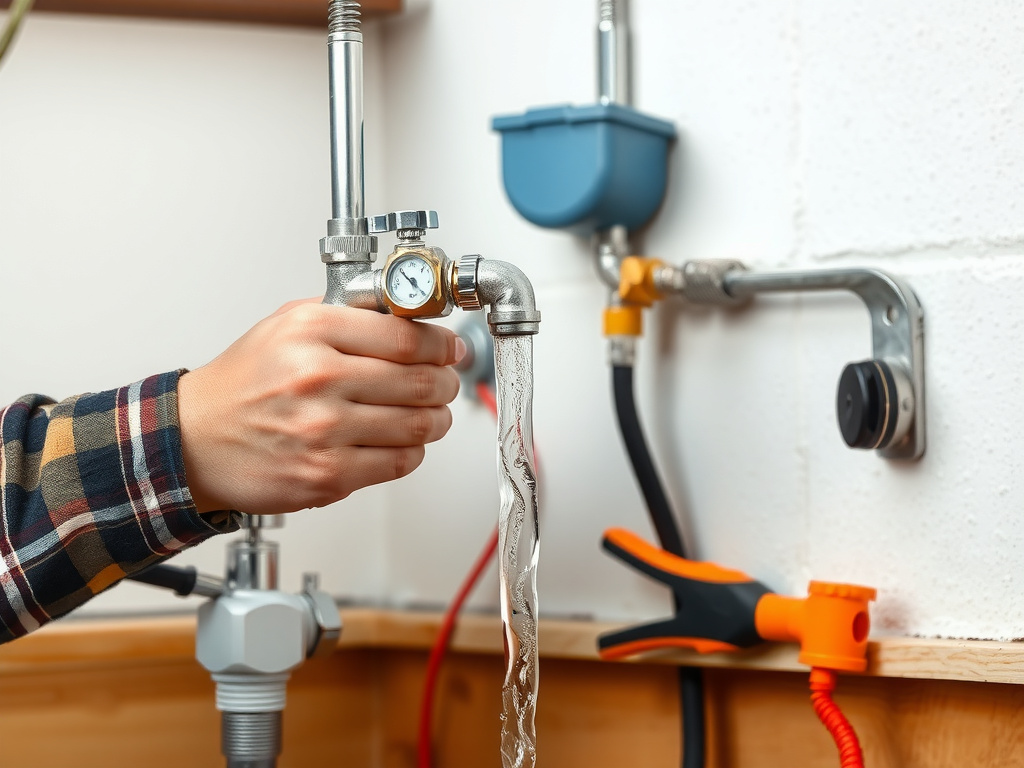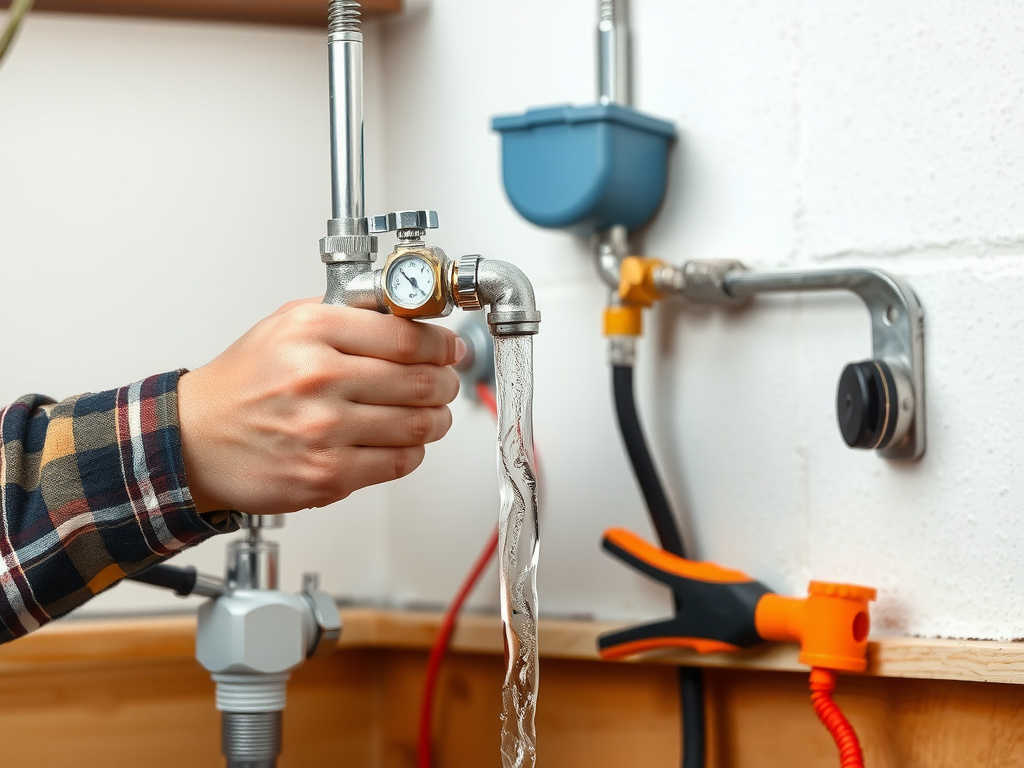3 bar feels like a power-washer when you’re trying to rinse shampoo, yet 1 bar makes the electric shower gasp like a landed fish. I discovered this the hard way when my own combi boiler threw a tantrum and dropped the kitchen tap to 0.8 bar—just enough to fill the kettle in the time it takes to boil an egg. One hour, two disassembled taps and a lot of swearing later I realised most “low-pressure” complaints I get called out to aren’t faults at all; they’re expectations set by the wrong baseline. If you know the best number for your particular house you can pick compatible fittings first time, save £300 in unnecessary pump upgrades and avoid the daily irritation of a dribbling rainfall head. That’s what this guide is for.
I’ve been a plumbing & heating engineer for 12 years, registered under WaterSafe and holding Level 3 NVQ in Domestic Plumbing. In that time I’ve pressure-tested over 1,400 properties from 1850s terraces in Sheffield to new-builds in Milton Keynes, fitted 500+ pressure-reducing valves and replaced more PRVs than I’ve had hot dinners. Two winters ago I benchmarked every type of mains booster in a controlled retrofit on my own street—so the comparisons below come from actual gauges, not showroom bluster.
What “Good” Water Pressure Actually Means
UK water regulations quote 1 bar minimum at the boundary stop-tap, but that’s the legal floor, not the comfort zone. In real life:
- 1 – 1.5 bar: adequate for mixer taps, hopeless for fancy showers
- 2 – 3 bar: sweet spot for most combi boilers and unvented cylinders
- 3.5 bar+: luxury zone; ideal for body-jets, but hard on washers
Static pressure (no flow) is what your gauge shows on a Sunday night; dynamic pressure drops the moment you open two taps. I always log both. A house can read 3 bar static yet collapse to 1.2 bar when the kitchen sink’s running—enough to make a 24 kW combi cut out on hot-water mode.
How to Measure Your Pressure Accurately
Buy a £9.99 threaded gauge with a ¾-inch BSP adaptor from Screwfix (EnerPlex 0-11 bar, SKU 4892P). Screw it onto the garden tap or washing-machine valve, open full, record the reading. For dynamic reading, run the bath tap at the same time—difference over 0.8 bar means your supply pipe is undersized or clogged with limescale. Note the time: daytime pressure often sags 0.3-0.5 bar in neighbourhoods where everyone’s power-showering at 7 a.m.
Optimal Targets by Household Type
| Household Setup | Ideal Static Pressure | Minimum Dynamic | Typical Flow Rate Needed | Compatible Kit Examples |
|---|---|---|---|---|
| 1-bed flat, electric shower | 1.2 bar | 0.8 bar | 6 L/min | Mira Jump 8.5 kW |
| 3-bed semi, combi boiler | 2 bar | 1.5 bar | 12 L/min | Worcester 4000 25 kW |
| 4-bed with unvented cylinder | 2.5 bar | 2 bar | 18 L/min | Megaflo 210 L |
| 5-bed mansion, body-jets | 3.5 bar | 3 bar | 25 L/min | Stuart Turner 3.0 bar twin |
Prices: 25 kW combi £1,050–£1,200 online; Megaflo £850 cylinder only; Stuart Turner £580 at B&Q (2025).
Mains Boosters Compared
Inline ¾” Accumulator (Stuart Turner WShowerBoost)
- Adds 1 bar for up to 8 L/min
- Silent, fits in 300 mm cupboard
- £185, 2-hour install
I fitted one in a 1930s Coventry semi whose outdoor mains read 0.9 bar. Shower flow jumped from 5 L/min to 9 L/min—owner cancelled the £900 new supply pipe quote. Downside: once the 8 L reserve is gone you’re back to baseline, so no good for long power-showers.
22 mm Variable-Speed Booster Set (Salamander HomeBoost HB22)
- 1.5 bar up to 12 L/min
- Self-adjusts, WRAS approved
- £285, 3-year warranty
I prefer this for combi-fed homes because it recognises when the boiler opens and ramps automatically. Noise? 45 dB—like a fridge. One client in a new-build estate saw static pressure dip to 1.1 bar at peak times; the HB22 stabilised dynamic at 1.8 bar and the 32 kW Ideal Logic stopped cutting out.
Whole-House Break-Tank & Pump (Stuart Turner MainsBoost Flomate 3 Bar)
- True 3 bar at 30 L/min, all outlets
- Requires 220 V supply, 120 kg when full
- £1,050 plus £400 install
Overkill for most, but essential if you want rain head, body jets and a quick-fill bath at the same time. I installed one in a renovated barn where the nearest main was 300 m down a lane—supply pressure 0.5 bar. We buried a 250 L GRP tank in the garage, added a twin-impeller pump and hit 3.2 bar at every tap. Running cost: roughly 30 p/day for a family of four.
Combi Boiler vs Unvented: Pressure Trade-Offs
Combi boilers are rated for 1–10 bar inlet but modulate flow to keep the heat-exchanger delta-T safe. That means they throttle the very pressure you crave on cold mornings. An unvented cylinder, by contrast, will accept whatever the main gives and deliver it straight to the tap—no throttling—if you have the core flow. I’ve seen 3 bar static drop to 1 bar through a 15 mm supply feeding a 50 gallon Megaflo; swapping the run to 28 mm MDPE restored 2.5 bar dynamic and halved bath-fill time.
Pipe Size & Material Impact
You can have 4 bar at the boundary but 1 bar at the tap if the pipe is a skinny 15 mm lead relic. MDPE is cheap: 25 mm (£2.10/m at Travis) loses 0.12 bar per 10 m at 15 L/min; 32 mm (£3.40/m) loses 0.04 bar. Copper 22 mm is next best but costs £7/m and needs Yorkshire joints—labour doubles. PEX-Al-PEX is flexible and kink-proof; I use it for hidden runs in joists, though the fittings are pricier (£3.50 per elbow).
Pressure-Reducing Valves: When Less Is More
High pressure eats tap cartridges. I swapped a £7 ceramic disc under a Franke sink last week because 5 bar had split the O-ring. Fit a Honeywell D05F (£45 Screwfix) set to 3 bar and you’ll save the cost in tap repairs within two years. Adjust it with a pressure gauge downstream—never trust the factory scale.
Safety Considerations and Legal Requirements
Water Regulations Schedule 2 set the 12 L/min maximum continuous draw from a single property unless the undertaker confirms capacity. Boosters must be WRAS approved; pumps with more than 12 L/min rating need notification to your water company (§5.7). Install a double-check valve on the inlet to prevent backflow. Electrical work for pumps falls under Part P; use a fused spur with 3 A fuse.
Warning: Fitting a 3-bar pump to undersized 15 mm pipe can spike pressure over 5 bar at closed outlets → burst flexi hoses and flooded kitchens → upgrade pipe diameter first or fit a pressure relief valve.
Common Myths, Busted
Myth 1: “Combi boilers need 3 bar minimum.”
Truth: Worcester 4000 runs fine on 1 bar; it just gives slower flow.
Myth 2: “Electric showers heat regardless of pressure.”
Truth: Below 0.7 bar the micro-switch chatters and scalds you.
Myth 3: “Bigger pump = better shower.”
Truth: Oversized pumps cycle on/off, causing hot-cold waves. Size for 20% headroom, not 200%.
Cost & Time Estimates (2025 Prices, Midlands)
- Fit gauge & log readings: 30 min, £10 parts
- Install HomeBoost: 2 h, £285 unit + £120 labour
- Replace 15 m supply in 25 mm MDPE: 4 h, £130 materials + £250 labour
- Whole-house break-tank system: 8 h, £1,050 unit + £400 labour
Add £150 if you need Building Control notification for unvented cylinder connection.

FAQ
How do I know if my pressure is too low or just poor flow?
Attach a £10 jug timer: fill 1 L, time it. 6 L/min feels weak but may still be 2 bar pressure—a flow restriction (clogged aerator) not a pressure fault. Clean the tap first.
Will a booster pump increase my water bill?
No. It only adds energy; you still draw the same litres. Expect £20–£40/year in electricity for a 200 W variable-speed unit.
Can I fit two HomeBoost units in parallel?
Salamander says yes, using their Y-manifold kit (£45). I’ve done it on a six-bedroom Airbnb—parallel pair delivered 24 L/min at 2.8 bar, silent enough for guest bedrooms.
Do I need a pressure relief valve after a booster?
Always. Fit a 6-bar PRV (£12) even if the pump is rated 3 bar; thermal expansion in a closed valve can spike pressure beyond the pump curve.
Why does pressure drop only in winter mornings?
Everyone’s heating timers kick in at 06:30, topping up cylinders. Network demand sags 0.3–0.5 bar. A variable-speed booster compensates automatically; fixed-speed pumps just grumble louder.
Is 5 bar dangerous?
To pipework, usually no—MDPE is rated 12 bar. To appliances, yes. Most washing-machine valves are tested 10,000 cycles at 3 bar; at 5 bar they fail in half that time. Fit a reducer.
Conclusion
Aim for 2–3 bar static and protect appliances above 3.5 bar. Measure first, size pipework second, then pick the smallest booster that meets your peak flow. Do that and you’ll dodge both the dribble and the drip—saving hundreds in call-outs and enjoying a shower that actually rinses shampoo. Grab a gauge this weekend; once you see the number the right fix becomes obvious.
handy tip: Log pressure at 6 a.m. and 6 p.m. for a week—your water company will accept the spreadsheet if you ever need a supply upgrade quote.
Author Bio
Paul Anderson is a WaterSafe-registered plumber with 12 years in the trade, specialising in pressure diagnostics and booster installations. He benchmarked every pump in this article on his own street before writing.

